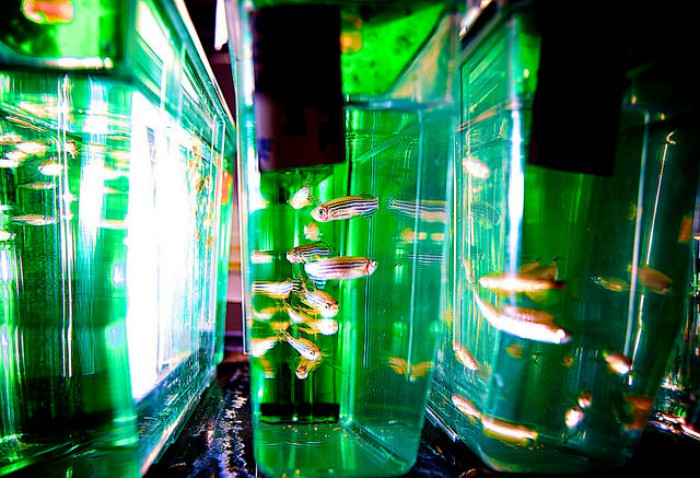Yeast and zebrafish are among the lab organisms being recruited to the search for rare disease cures.
Rare diseases are not so rare. About 300 million people worldwide live with the more than 7000 individual diseases that are designated “rare” by the US government. But because each of these affect so few individuals, the usual resources and research that lead to new treatments are not available. That’s why scientists have had to get creative.
Studying organisms that may at first glance seem totally unrelated to humans is proving an important tool for understanding and finding treatments for rare disease. In a review in GENETICS, Strynatka et al. outline the ways in which laboratory model organisms are paving the way for life saving therapies, with a particular emphasis on baker’s yeast and zebrafish. Check out the review to learn more about the ingenious methods being applied, but in honor of Rare Disease Day, we’d like to highlight a couple of examples of model organism studies aiding the search for new therapies.
The yeast Saccharomyces cerevisiae has long been a powerful tool for studying the workings of the cell. As a eukaryote, S. cerevisiae shares many genes with humans and other animals, but it is a single-celled organism, so it can be more rapidly studied. Investigations in yeast demonstrated that a gene that is overexpressed in the aggressive childhood cancer rhabdomyosarcoma results in chromosomal instability. This instability made the yeast cells sensitive to drugs that are histone deacetylase inhibitors. Thanks to these insights from yeast, FDA-approved drugs in this class could one day prove useful for treating this rare cancer.
Clues to a treatment for Duchenne muscular dystrophy (DMD), an uncommon but severe disease, were uncovered using the zebrafish Danio rerio. Zebrafish can be grown quickly and boast transparent embryos that provide a remarkable window into body development. The zebrafish model of DMD harbors a premature stop codon in the homolog of the gene dmd, mimicking the human disease. This model led to the discovery that treatment with ataluren, an antibiotic, can promote read-through of this mutant stop codon. In 2014, ataluren was approved for clinical use in DMD by the European Medicines Agency.
Yeast and zebrafish have even been used in concert to identify new ways to treat rare disease. Mutations in the gene SLC25A38 cause a form of congenital sideroblastic anemia that has no effective treatment. This gene’s function remained unknown until studies in yeast showed that it transports glycine into the mitochondrion for heme synthesis. Giving mutant yeast extra glycine allowed them to produce heme at normal levels, “curing” the yeast version of the disease. However, extra glycine did not rescue heme production in zebrafish with a homologous mutation. It turns out that this disparity was due to different folate pathways in the two models. Yeast are able to synthesize folate on their own, whereas animals, like zebrafish and humans, must consume it in their diet. Giving the mutant zebrafish both glycine and folate restored heme production. These results suggested a new avenue for treatment using simple nutrients, rather than costly drugs. Further studies of the pathway in another model organism, the mouse, may reveal more about how to translate this treatment from the fish tank to clinic.
CITATION:













